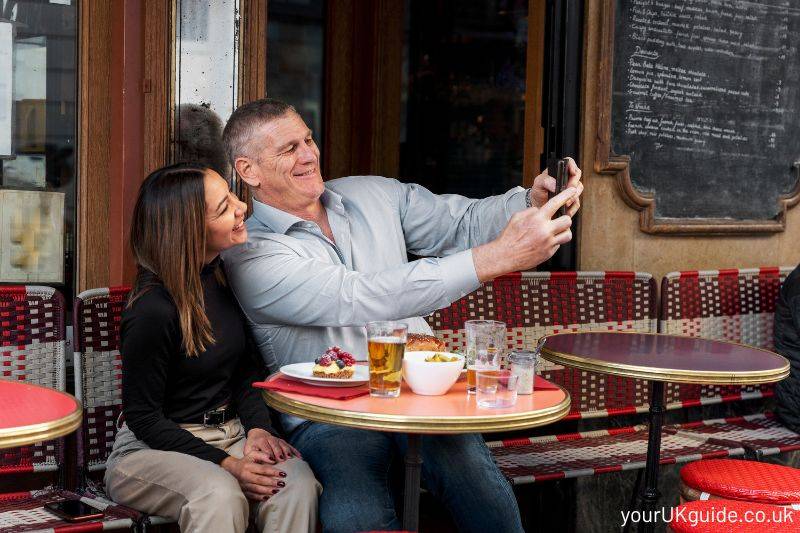Around forty percent of Americans have been in partnerships with someone at least ten years older or younger than themselves. Among married couples, close to nine percent have an age gap of ten years or more. Large age gaps between opposite-sex couples are usually between an older man and a younger woman. Only about one percent of heterosexual couples in the United States have a difference as wide as twenty-eight years or more. Same-sex couples, especially male-male pairings, more often report larger age differences. On average, the age gap between husbands and wives in the United States is now about two years, a slight decrease since the early 2000s.
Age Gaps in Practice
A pairing with a decade or more between partners is not rare. Many people form these partnerships after meeting online or in settings where age matters less than shared interests or timing. Older men and younger women form the majority of age gap couples, but this is not unanimous.
Some people are drawn to relationships where there is a difference in life stages or maturity. Others look for shared values. Some prefer the stability that an established career or settled lifestyle can offer. These partnerships are shaped more by the choices and needs of each person.
Modern Pairings: Choices Beyond Tradition
There are many ways people form connections in age gap relationships. Some couples meet through friends, while others find each other online. Pairings like older man and younger woman, like in the case of a sugar baby, are common, but so are older woman and younger man. Some seek similar life goals, while others might value shared interests or timing.
Among these many paths, a few couples label themselves differently or explore less traditional setups found in social groups or through dating sites. Each choice is shaped by personal preference, priorities, or even chance. The range of relationship styles shows how private these decisions can be.
Social Perception of Age Gaps
Social views about these unions are slowly becoming less rigid. A decade ago, many older adults saw an age gap as a flaw or a risk. Survey results now show that sixty-three percent of seniors see these matchings as a proper way to find companionship. People over fifty are also less likely to see age as a dividing line. Nearly seventy percent now say that shared values matter more, a rise from less than half surveyed in 2015.
Acceptance varies by the size of the gap. Men are twice as likely as women to say that gaps of twenty years or more are acceptable, with twelve percent holding this opinion compared to six percent of women. In one survey, only nine percent of adults approved of such large differences. For most people, a gap between four and nine years is seen as the upper limit. Fifteen percent declare four to six years as most they would accept, while twelve percent accept up to nine years.
Life Stages and Shared Values
In practice, a partnership with an older man may come with differences in priorities or expectations. Someone settled in work or family life may value routine or predictability. A younger partner may have different needs or ambitions. Sometimes, these differences add balance. Other times, they can create tension. Partners may align better if they share views on money, health, or family plans. Some couples value regular conversation to discuss goals or changes in circumstances.
An age gap can highlight differences in health, energy levels, or views on social activities. Each person may need to adjust. For example, one partner may prefer quiet evenings while another looks for frequent outings. Long-term plans may include questions about retirement, children, or care needs.
Challenges and Misconceptions
People can face questions from friends or family about motives. A woman dating an older man might deal with assumptions about money, status, or dependency. Family members sometimes worry that life stages will not match up over time. Managing this depends on how comfortable each person is with outside opinions.
In the minority of cases where the age gap is very large, social acceptance may drop further. Only one percent of heterosexual couples in the US report an age gap of twenty-eight years or more. More noticeable age differences may attract more comments or make public events harder to attend together.
Gender Differences in Age Gaps
Most large age gap pairings involve older men, but there are also growing numbers of older women forming partnerships with younger men. Statistics report only one point three percent of opposite-sex marriages with an older woman by at least ten years. In same-sex male partnerships, twenty-five percent have large age differences. Among women in same-sex pairings, fifteen percent report a similar gap. These numbers suggest that while older young woman relationships are more common, they are not the sole model.
Practical Tips for Age Gap Relationships
Partners can discuss topics such as finances, lifestyle, and long-term care. These talks matter more when large differences exist in income, retirement plans, or health needs. Each person might bring different skills or outlooks from living in different times. Sometimes, being open about these contrasts is key.
Each partnership makes its own rules on what works. Some couples enjoy learning from each other because of different life paths. Others rely on habits or routines that suit both. Success often comes from discussing what each person expects without pressure to fit a certain idea.
Final Thoughts
Dating an older man involves factors that younger couples may not face. Age gaps can highlight differences but also give each person a different view on life. Data shows that many people have tried or consider such relationships. While these pairings may bring challenges, the way partners address them often depends more on agreement about values and goals than on the number of years between them.










